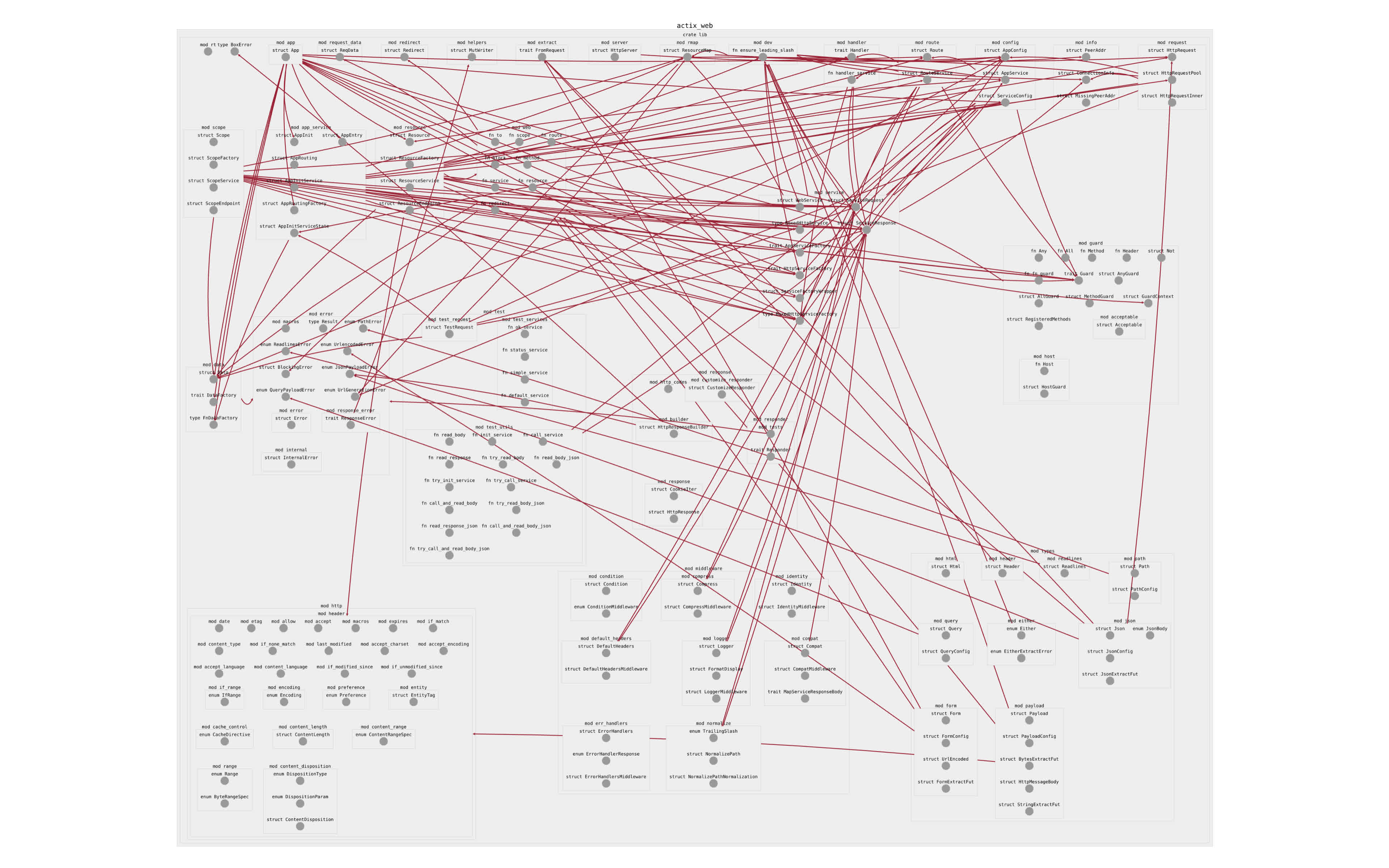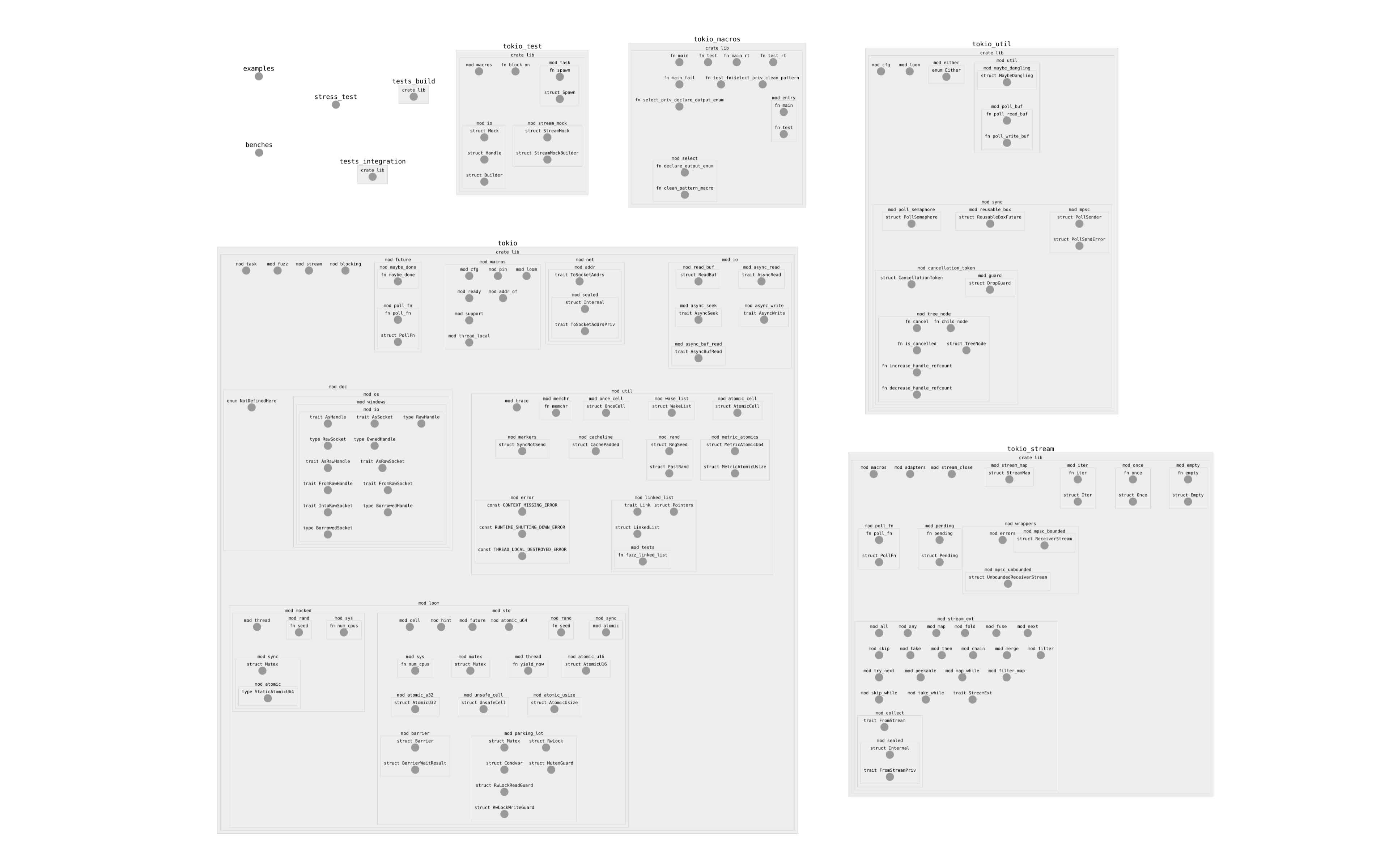Navigating through a big codebase is hard, especially when you are just learning it. IDEs make it simpler, but they do not show the "real" project structure, with all inter-module dependencies and such. rust-ontologist comes to the rescue: it generates a structure, or ontology, of any Rust project, and visualizes it in an interactive browser window.
rust-ontologist is fast enough to handle a project of any scale, including the Rust compiler itself, which we demonstrate below.
Clone the repository:
$ git clone https://github.com/lava-xyz/rust-ontologist.git
$ cd rust-ontologist
Run the following command to generate a project structure dump in JSON:
$ cargo run -- -p <your-cargo-project>
Run a static server on port 8000:
$ python -m http.server 8000
Finally, open http://localhost:8000/index.html and see the result!
To enable coloured edges, provide the flag --enable-edges. Note that not all module dependencies are shown at the moment.
rust-bitcoin/bitcoin (edges enabled)
actix-web/actix-web (edges enabled)
tokio (edges disabled)
rust (edges enabled)
Just fork the repository, work in your own branch, and open a pull request on master. When submitting changes, please prefer rebasing the branch to keep the commit history as clean as possible.
- Update the
versionfield inCargo.toml. - Update
CHANGELOG.md. - Release the project in GitHub Releases.
- Think about packaging
rust-ontologiston crates.io. We have thisindex.htmlfile, what to do with it? - Show more information in the graph: comments, types, etc. We need hide/unhide functionality for this.
- Implement various code quality metrics based on graph manipulation.
- Automatically suggest changes that are likely to improve a project's architecture.
- Integrate with Git and GitHub: add a UI for commits, issues, PRs, show exact code locations of items, etc.
- Experiment with nicer-looking but fast UI.



